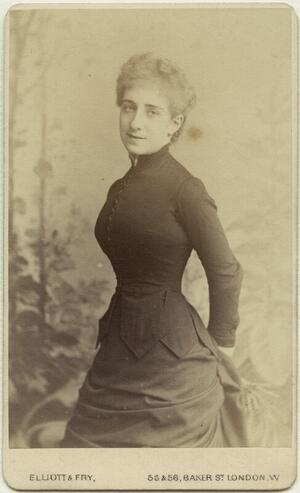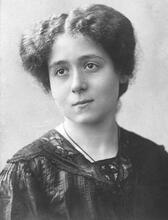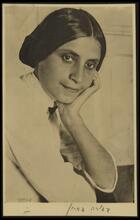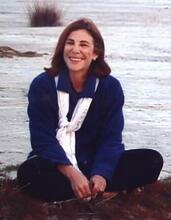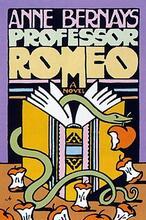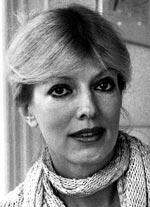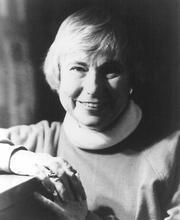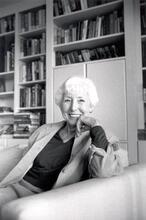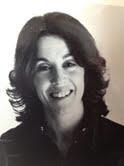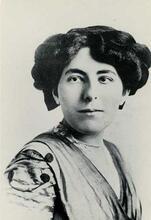Ada Leverson
Ada Leverson began her literary career by contributing sketches, parodies and stories, noted for their witty social comment, to the English press and to magazines like the famous Yellow Book. Although essentially a product of the revolt against High Victorianism, as well as of Edwardian and pre-War social mores, Ada Leverson remained attuned to the latest cultural trends, and was quite a prominent figure in the literary and artistic circles of the 1920s. Her stylish and pleasurable novels afford invaluable insights into the human comedy and the English society of her day.
Early Life
One of the most attractive qualities of Ada Leverson was her unswerving loyalty to her friends, among whom she counted Oscar Wilde and his circle. She met that master of paradox in 1892, and remained faithful to him when he was pilloried as a homosexual, throughout his trials, imprisonment and exile. He admired her wit and encouraged her literary gifts, memorably calling her the “Sphinx.” Later, she would be regarded as the Egeria of the aesthetic movement of the eighteen nineties.
Ada Esther Beddington was born in London on October 10, 1862, the eldest of the nine children of Samuel and Zillah Beddington. Her cultivated, liberal, assimilated family lived in Bayswater in solid Victorian comfort. Her valetudinarian but masterful father, son of a wool merchant, became sufficiently well-to-do to retire from business. He liked to hold forth on the Bible. However, while Ada was taught French and German, Latin and Greek, there is no mention of Hebrew. Her mother was a highly accomplished pianist, friend of celebrated musicians like Paderewski and Puccini. One of Ada’s sisters married the banker David Seligman; another married the art collector Sydney Schiff, who wrote novels under the pseudonym ‘Stephen Hudson’ and was associated with James Joyce and Marcel Proust.
Marriage and Children
Although Ada’s wedding to Ernest Leverson, a wealthy City diamond broker twelve years her senior, took place on December 6, 1881 according to Jewish rites, she appears to have taken little interest in Jewish matters throughout her life. Indeed, she would attend High Mass at the fashionable Brompton Oratory with the Decadent artist Aubrey Beardsley, and was momentarily tempted by conversion to Roman Catholicism.
Her marriage to Ernest Leverson produced two children: George, who died in infancy in 1888, and Violet, born in 1890. It proved to be far from happy, for her husband was an inveterate gambler and philanderer. Their disunion ended in financial disaster and separation, but it served as the underpinning of many subtle and telling scenes between incompatible couples in her novels. Meanwhile, Ada engaged in flirtations with Lord Desart, the novelist George Moore, and the writer and caricaturist Max Beerbohm, among others. Extremely well read in English and French literature, she began her literary career by contributing sketches, parodies and stories, noted for their witty social comment, to the press and to magazines like the famous Yellow Book.
Publications and Literary Talents
Her first novel, The Twelfth Hour, was published to acclaim in 1907. There followed Love’s Shadow in 1908, which introduced Edith and Bruce Ottley, an intelligent bored wife endowed with a sense of humour and her self-centred humourless husband, who would reappear in Tenterhooks (1912) and Love at Second Sight (1916). These three novels were reprinted as The Little Ottleys in 1962 when there was a second revival of interest in her work (the first having occurred in 1950–1951), and again twenty years later in 1982 in a period of active feminism. Ada Leverson’s talent lay in sharp characterization, scintillating dialogue, and witty social satire, accompanied by a penetrating understanding of life’s illusions—qualities to be found also in The Limit (1911) and Bird of Paradise (1914). She stayed within her limits and was criticized for paying insufficient attention to the 1914–1918 War.
Although essentially a product of the revolt against High Victorianism, as well as of Edwardian and pre-War social mores, Ada Leverson remained attuned to the latest cultural trends, and she was quite a prominent figure in the literary and artistic circles of the twenties. After the death of her husband in Canada in 1922 she decided to sell her London house and spend part of the year in Florence. She already knew the aristocratic siblings, Osbert, Sacheverell and Edith Sitwell (as well as their protégé, the impecunious composer William Walton). Now she met their eccentric father who resided at the castle of Montefugoni. She also knew young Harold Acton at Villa La Pietra and other members of the British colony in Florence. Passionately devoted to the three Sitwells in and out of season, she set about promoting their writings, and was present in London at the first public performance of the notoriously modernist Façade, Walton’s witty setting of Edith’s poems.
Ada’s circle was wide: she was acquainted with many writers of repute such as Somerset Maugham, Ronald Firbank, Percy Wyndham Lewis and T.S.Eliot. Her account of the first night of The Importance of Being Earnest was first published in T.S.Eliot’s Criterion in April 1926. Her memoir of Oscar Wilde did not appear until 1930, although it was written long before.
Once dressed expensively by Paquin, and later always swathed in black and screened by broad-brimmed black hat, Ada became—despite increasing deafness—a character on the cultural scene. She died in London on August 30, 1933. Her stylish and pleasurable novels afford invaluable insights into the human comedy and the English society of her day.
Selected Works of Ada Leverson
The Twelfth Hour (1907, reprinted 1951); Love’s Shadow (1908, reprinted 1950,1962, 1982).
The Limit (1911, reprinted 1950); Tenterhooks (1912, reprinted 1950, 1962, 1982).
Bird of Paradise (l914, reprinted 1951).
Love at Second Sight (1916, reprinted 1951, 1962, 1982).
Letters to the Sphinx from Oscar Wilde, with Reminiscences of the Author (1930).“ Suggestion.”
Yellow Book V (April 1895, reprinted in The Yellow Book: An Anthology, 1974).
“The Quest of Sorrow,” Yellow Book VIII (January 1896, reprinted in The Yellow Book: A Selection, 1949).
Acton, Harold. Memoirs of an Aesthete. London: 1948.
Burkhart, Charles. Ada Leverson. New York: 1973.
Ellmann, Richard. Oscar Wilde. London: 1987.
Lewis, Percy Wyndham. The Apes of God. London: 1930.
MacInnes, Colin. “The Heart of a Legend.” In England, Half English. London: 1961.
Pritchett, V.S. “The Knightsbridge Kennels.” In The Working Novelist. London: 1965.
Sitwell, Osbert. “Ada Leverson.” In Noble Essences. London: 1950.
Speedie, Julie. Wonderful Sphinx: The Biography of Ada Leverson. London: 1993.
Wyndham, Francis. “Ada Leverson.” In The Theatre of Embarrassment. London: 1991.
Wyndham, Violet. The Sphinx and Her Circle. A Biographical Sketch of Ada Leverson. London: 1963.
ARCHIVAL DEPOSITS
The Beinecke Rare Book and Manuscript Library, Yale University Library; the Berg Collection, New York Public Library; the University of Texas at Austin.

